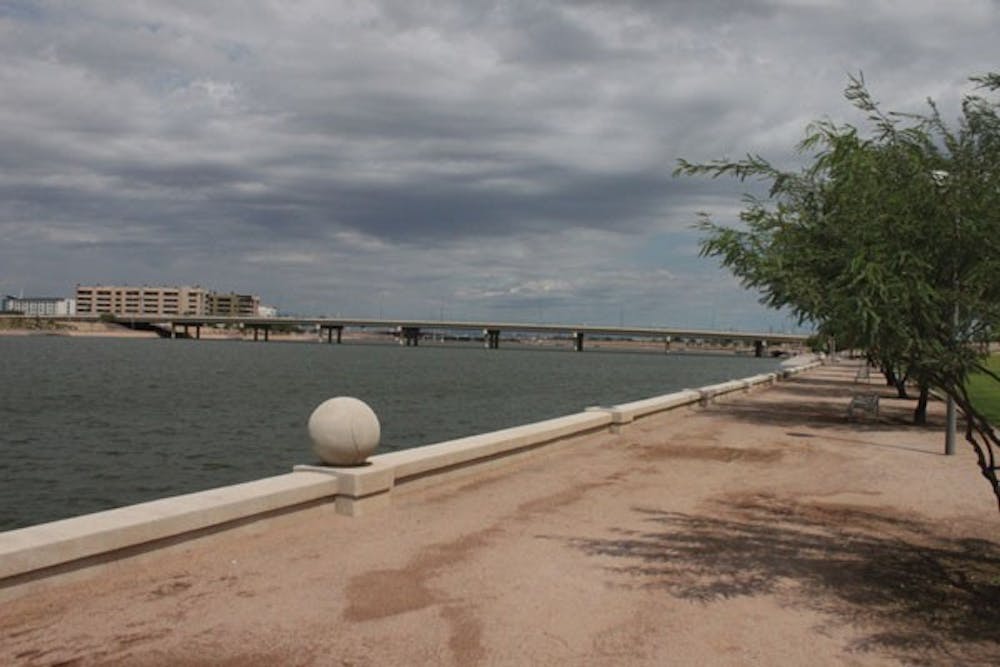
Triclocarban and triclosan, the chemicals found in samples given to an ASU research team, could be present in Tempe Town Lake. These chemicals are found in personal care products and are potentally harmful to both humans and the environment. (Photo by Laura Moraes)
ASU research scientists, working with federal agencies, found chemicals from personal care products flowing from wastewater treatment plants to the rivers and lakes of Minnesota.
U.S. Geological Survey and ASU collaborated to collect samples from the environment affected by these toxins.
USGS then sent samples to engineering professor and Biodesign Institute Environmental Security Director Rolf Halden and his team of researchers.
Analysis of the samples revealed triclosan and triclocarban, two active antimicrobials found in products such as liquid hand soaps and solid bar soaps.
According to an Aug. 16 ASU news release, the Environmental Protection Agency and Food and Drug Administration have been closely examining these two chemicals because of the damage they cause to humans and the environment.
ASU scientist Benny Pycke said both chemicals can interfere with important body functions.
“Both chemicals are endocrine disrupters, so they will mess up the chemical signaling in your body,” Pycke said. “Triclosan … interferes with muscle contractions, so it’s pretty significant.”
Pycke said the entire project took about a month, but extracting chemicals from the sediments only took about 24 hours.
Sustainable engineering doctoral student Arjun Venkatesan said the team at ASU received the sediment samples in a frozen jar from the teams in Minnesota.
After thawing and drying the samples, Venkatesan used solvents to extract the chemicals the team was trying to analyze. Pycke then conducted his own tests and reported back to Venkatesan with the concentration levels of the chemicals.
Pycke said the chemicals enter bodies of water through wastewater treatment plants.
As the water is filtered and treated, these chemicals get left behind because the plants are not able to break them down.
The groups working on this project then tracked the extent of the environmental pollution by analyzing water coming from the wastewater treatment plant.
“We sampled before and after the point of discharge to see whether the wastewater treatment plants actually significantly impact the environment,” Pycke said. “To our surprise, we found a high (chemical) concentration down stream of the wastewater treatment plant … (and) a high concentration upstream as well.”
Both scientists said this type of contamination could be found in almost any body of water, including Arizona water.
Following his work in Minnesota, Halden banned soap products containing the two chemicals from being used in the Biodesign Institute.
Pycke said some soaps at the Memorial Union may still contain these chemicals.
“The student population at ASU is probably widely exposed to these chemicals,” he said.
While the soaps are safe for use, the chemicals can remain in the city water supply and can harm people who consume this affected water.
Biochemistry junior Dixit Patel said the MU should consider switching to a safer soap.
“There are other alternatives to use for that soap,” Patel said. “We shouldn’t sacrifice our health when there are other solutions.”
Reach the reporter at bmlawso2@asu.edu




